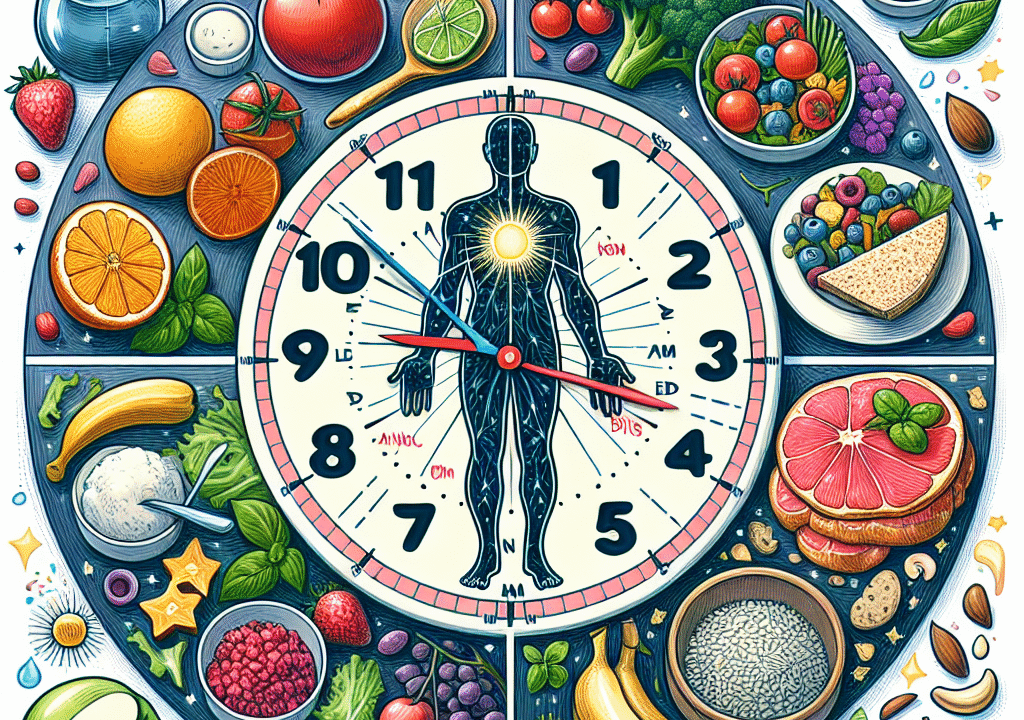
The Galveston Method: A Nutritional Revolution for Menopausal Women
Menopause marks a significant transition in a woman’s life, often accompanied by fluctuating hormones that impact metabolism, mood, cognition, and energy levels. Common symptoms like stubborn weight gain, irritability, brain fog, and fatigue can largely be traced back to declining levels of estrogen and progesterone. While many diets claim to offer quick fixes, most fail to address the root cause: hormonal imbalance.
This is where the Galveston Method makes a difference. Developed by Dr. Mary Claire Haver, a board-certified OB-GYN and certified Culinary Medicine specialist, this approach is tailored specifically for women navigating perimenopause and menopause. According to Dr. Haver, “Traditional diets weren’t working for me—or my patients—because they ignored the hormonal reality of menopause.”
This article explores how the Galveston Method incorporates anti-inflammatory nutrition, fasting strategies, and macronutrient balancing to help women reclaim their health during midlife.
What Is the Galveston Method?
The Galveston Method is a evidence-based lifestyle and nutrition plan centered around hormonal health. Unlike mainstream diets that focus only on calorie reduction, this method aims to restore hormonal balance, improve insulin sensitivity, and minimize inflammation — especially important during the menopausal transition.
One study published in the Journal of Clinical Endocrinology & Metabolism found that insulin resistance significantly increases during menopause, promoting weight gain, particularly around the abdomen (Lovejoy et al., 2008).
Dr. Haver emphasizes, “Many women come to me doing everything ‘right’ yet still gaining belly fat. It’s not their fault—it’s hormonal.”
By emphasizing anti-inflammatory foods, intermittent fasting, and smart carbohydrate intake, the Galveston Method creates sustainable, long-term health from the inside out.
Understanding the Hormonal Shift of Menopause
To grasp the science behind the Galveston Method, it’s essential to first understand the hormonal changes of menopause. When ovarian function declines, so do the levels of estrogen and progesterone — hormones critical to energy regulation, metabolism, fat distribution, and emotional balance.
Estrogen in particular plays a key role in:
– Regulating fat metabolism
– Supporting stable energy and mood
– Enhancing insulin sensitivity
– Aiding neurotransmitter function in the brain
When estrogen drops, women become more prone to insulin resistance, which can lead to erratic blood sugar levels, fatigue, and increased abdominal fat. The North American Menopause Society reports that approximately 68% of women gain weight during this stage of life.
Traditional calorie-restriction diets often overlook these hormone-driven metabolic changes — leading to limited results and ongoing frustration. The Galveston Method addresses these changes head-on with a personalized, biology-based strategy.
The Three Core Pillars of the Galveston Method
This transformative plan rests on three interrelated pillars that target inflammation, insulin resistance, and nutritional balance.
1. Anti-Inflammatory Nutrition
Chronic inflammation underlies many common menopause symptoms, including hot flashes, fatigue, mood disturbances, and joint pain. The Galveston Method promotes a whole-food, anti-inflammatory eating style that avoids ingredients that exacerbate inflammation such as:
– Refined sugars
– Processed foods
– Harmful seed oils (e.g., soybean, corn oil)
Instead, it encourages the inclusion of:
– Leafy greens like spinach, kale, and arugula
– Omega-3 rich fatty fish such as salmon and sardines
– Antioxidant-packed fruits like blueberries and blackberries
– Healthy fats including extra-virgin olive oil, avocado, and nuts
– Clean proteins such as eggs, legumes, tofu, and grass-fed meats
A study published in the journal Nutrients (2020) found that a Mediterranean-style diet significantly reduced hot flashes in menopausal women compared to those who consumed more refined carbohydrates.
2. Intermittent Fasting
The Galveston Method simplifies intermittent fasting using a 16:8 model—fast for 16 hours and eat during an 8-hour window. This approach helps to:
– Lower insulin levels
– Improve metabolic flexibility
– Promote autophagy, the body’s natural cellular repair process
Fasting has been shown to decrease oxidative stress, enhance insulin signaling, and support overall metabolic health—critical for women in midlife trying to shed fat and increase energy naturally. Women practicing this fasting method often report better sleep patterns, reduced cravings, and heightened focus—all without obsessive calorie-counting.
3. Fuel Refocusing: Rethinking How You Eat
This pillar kicks traditional dieting to the curb by focusing not on eating less, but on fueling better. The plan shifts your intake toward healthy fats and proteins while reducing simple carbohydrates.
Fuel refocusing examples include:
– Replacing sugary cereals with a veggie-packed omelet and sliced avocado
– Swapping pasta for zucchini noodles topped with grilled chicken or seafood
– Choosing a snack of Greek yogurt and almonds instead of a granola bar
By stabilizing blood glucose levels, this approach helps reduce energy crashes commonly experienced during menopause—and makes weight loss feel far more achievable.
Why the Galveston Method Is Ideal for Midlife Women
Unlike many weight-loss trends, the Galveston Method was crafted by a woman navigating menopause—for women navigating menopause. Rather than using a generic “eat less, move more” strategy, it respects and works with the hormonal realities of midlife.
Women who follow the Galveston Method often note:
– Reduced severity and frequency of hot flashes
– Easier loss of abdominal weight
– Increased mental clarity
– Fewer mood swings
– Improved sleep patterns
Most importantly, this method is sustainable and customizable. Whether you follow a vegetarian, pescatarian, or omnivore diet, you can make this method work for your lifestyle and preferences.
Real Women, Real Recovery
According to a recent survey of 1,000 women following the Galveston Method:
– 82% reported fewer hot flashes after just six weeks
– 74% lost noticeable weight and reduced belly fat in eight weeks
– 89% said they felt empowered and more in control of their health
“I’d tried every diet to lose the 15 pounds gained during perimenopause. After adopting the Galveston Method, the weight came off and the brain fog disappeared within a month,” says Laura, 51, from Tampa, Florida.
These results reflect a common theme: when nutrition aligns with hormonal shifts, the transformation extends beyond the scale—it touches every part of health and confidence.
How to Begin Your Journey with the Galveston Method
You don’t have to overhaul everything overnight. Starting the Galveston Method can begin with just a few changes:
1. Assess your current habits: Identify where inflammation hides—think sugary desserts, processed snacks, or poor sleep hygiene.
2. Add nutrient-rich meals: Start your day with protein, veggies, and healthy fats.
3. Try intermittent fasting: Begin with a 12:12 eating window and work toward 16:8 if comfortable.
4. Balance your macronutrients: Focus on meals that combine protein, fiber, and good fats to promote satiety and energy.
Tip: Maintain a journal or use a food-tracking app to monitor symptoms like mood, energy, and sleep. You may see improvements within the first few weeks.
Embracing a New Chapter with Confidence
Menopause doesn’t have to feel like a decline in vitality—it can be a time of powerful reinvention. With the Galveston Method, you’ll learn to support your body with the foods and habits it truly needs during this life stage.
Instead of fighting against your biology, you’ll harness it—leading to more sustainable weight loss, balanced moods, mental clarity, and long-term wellness.
You’re not just managing symptoms—you’re embracing transformation.
Start Your Transformation Today
Your journey to better health during menopause begins with your next meal. The Galveston Method provides a research-supported path that empowers you to feel stronger, clearer, and more vibrant—at any age.
For support tools and menopause-focused supplements, visit edrugstore.com for discreet, FDA-approved options delivered to your door.
References
– Lovejoy, J. C., Champagne, C. M., de Jonge, L., Xie, H., & Smith, S. R. (2008). Increased Visceral Fat and Decreased Energy Expenditure During the Menopausal Transition. Journal of Clinical Endocrinology & Metabolism, 93(3), 947–953.
– Bani, S., Hasanpour Ardekan, M., & Tavakkoli, R. (2020). Effects of Mediterranean Diet on Hot Flashes in Postmenopausal Women. Nutrients, 12(5), 1438.
– North American Menopause Society. (2022). Menopause Weight Gain: Understanding Hormonal Imbalance.
– National Institutes of Health. (2021). Inflammation and Chronic Disease in Menopause.


